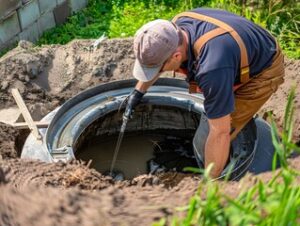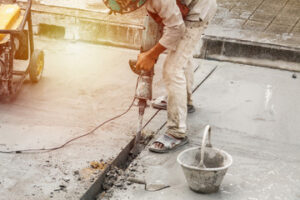Proper technique is key to getting a good-looking good-looking result if you’re painting new drywall. This is true whether you’re doing it yourself or hiring a pro.
Painting New Drywall can have some imperfections that must be corrected with joint compound and sanding before painting. A little prep work can make all the difference.

Whether you just finished drywalling a new basement or have a brand-new room to paint, certain steps and procedures must be followed to ensure the paint adheres correctly and that the finish looks good. Skipping these essential steps can lead to poor adhesion, visible seams and edges, and an overall unattractive appearance.
Before applying a coat of paint to your new drywall, you should first lightly sand the surface to create a smooth and even base. You should also wipe the walls down with a damp cloth to remove any dust or dirt. Using a high-quality primer specifically designed for drywall will help you achieve the best results.
Drywall primer can be found at most home improvement stores and is generally fairly inexpensive. It will help you achieve a better and more professional-looking finish that will hold up well over time.
It is important to apply the primer in thin coats, allowing the previous coat to fully dry before applying the next. This will minimize the appearance of roller marks and will ensure that you are achieving a uniform and consistent coat.
Once you are done priming, let the wall dry for a few hours before painting. If you attempt to paint the drywall before it is completely dry, you could experience problems such as bubbling, peeling or mildew growth.
If you are not sure if your drywall is ready for paint, you can test the product by applying a small amount to an inconspicuous area and waiting for it to dry. This will give you an idea of the performance and compatibility of the paint with your drywall and allow you to make any necessary adjustments before proceeding with a full application.
It is also a good idea to cover furniture and any other items that are at risk of getting dust or paint on them. This will not only keep them safe but it will also make the clean up process much easier and faster. Once you have completed the steps above, you are ready to begin painting your drywall!
Selecting the Right Paint
The choice of paint has an impact not just on the final appearance but also how well the painting adheres, how easy it is to apply and clean, and how long it lasts. There are many different paint options available and it is crucial that the right type of paint be selected for each job. The type of drywall you are working with and the specific lighting conditions in the room should be considered when selecting paint.
After the drywall is taped and floated, fasteners covered, and sanded smooth, the first coat to be applied should be a high-quality drywall primer. This will ensure that the surface is primed properly and helps to give the paint a longer lifespan.
The type of drywall paint you choose will have a big impact on the overall finish of your walls. You can find a wide variety of drywall paints that can be used to achieve any desired look and feel to the space. The best drywall paints will provide good coverage and durability while still being easy to clean and apply.
It is important to select a color that complements the space and fits your personal style. The use of color in interior spaces has been linked to a range of psychological effects, so it is worth considering the mood that you want to create in each space and choosing a paint that will help to achieve this.
In addition to color, it is important to consider the sheen of the paint you are using as this will affect how the light reflects off of the wall. There are many different sheens to choose from so it is important to test the colors in the space under both natural and artificial lighting to make sure that they will work.
Lastly, when you are ready to begin painting it is important to carefully follow the application instructions for each product. It is also a good idea to use a small amount of paint at a time and apply multiple thin coats rather than one thick coat as this can prevent drips, unevenness and other issues with the finished product.
Cutting In
If you don’t properly cut in the drywall, it can affect your paint job. This is why many people choose to hire a professional to perform their drywall repair and painting. A skilled contractor will be able to complete the project within a reasonable timeframe and at a fair price. However, before you hire a contractor, ask to see samples of their work. This will give you a good idea of their abilities and the quality of their work.
Drywall can have minor imperfections such as dents, cracks, and nail holes that will need to be repaired before painting. These imperfections can cause a less than perfect finish when you paint over them. Using a putty knife and some joint compound, you can fill in these imperfections and sand them smooth before painting.
Depending on the location of the drywall, you may also need to use an electric sander to create a smooth surface for the paint to adhere to. This will give you a much smoother finish than if you only used a brush to apply the paint.
After you’ve finished sanding, you should then prime the drywall. This will help to ensure that the drywall is fully prepared for the paint and will prevent future problems. If you skip this step, the paint will not adhere to the drywall and it will flake off in short order.
When you’re ready to paint, make sure that you have a well-loaded brush. Begin applying the paint near the edge of the wall and gradually move towards the center. This will help you get a more concise line when you’re painting and it will avoid the problem of getting too close to the edge that can ruin the line.
Another trick that will help you achieve a more precise line when painting is to vibrate the brush slightly. This will release extra paint and allow it to filter into small areas of the wall that you might otherwise struggle to reach. This is particularly helpful when painting corners or other tight areas that require a precise line.
Applying the Paint
Paint that isn’t properly applied or doesn’t adhere to new drywall can leave unsightly gaps, bumps and cracks. By following these simple steps, you can achieve a flawless finish and ensure that your paint will last for years to come.
The first thing to do is clean the walls. Use a mixture of mild detergent and water to wash the surfaces, and allow them to dry completely. This will help remove any dust and cobwebs that may affect the finish of your painting.
Once the walls are clean, apply a coat of primer to the drywall. Allow it to dry fully before proceeding with your final painting. Primer helps seal the drywall, which will help ensure that your final paint job looks great and won’t peel or flake away.
If you are changing the color of your drywall, then you will want to prime it again. If you skip this step, you will run the risk of your darker base bleed through your lighter topcoats. This can make your walls look patchy, uneven and unattractive.
After priming, you will want to give the drywall a final cleaning with a sponge that is barely damp. Doing this will help pick up any additional bits of dust that might have settled on the drywall, and it will also ensure that the drywall is completely dry before you begin painting. This is crucial because if you get the drywall wet before it’s dried, it will warp.
When you are ready to start painting, it’s important to take your time and do a good job. It’s better to do a few thin coats of paint than one thick coat, which can lead to visible brush marks. You should also avoid over-packing the paintbrush or roller; this will cause it to clog and lead to an uneven finish.
Painting drywall is not an easy task, but with a little bit of patience and attention to detail, you can get a beautiful finished product that will last for years to come. Proper preparation is critical, and by following these simple steps, you can be sure that your drywall will be ready for paint in no time!








